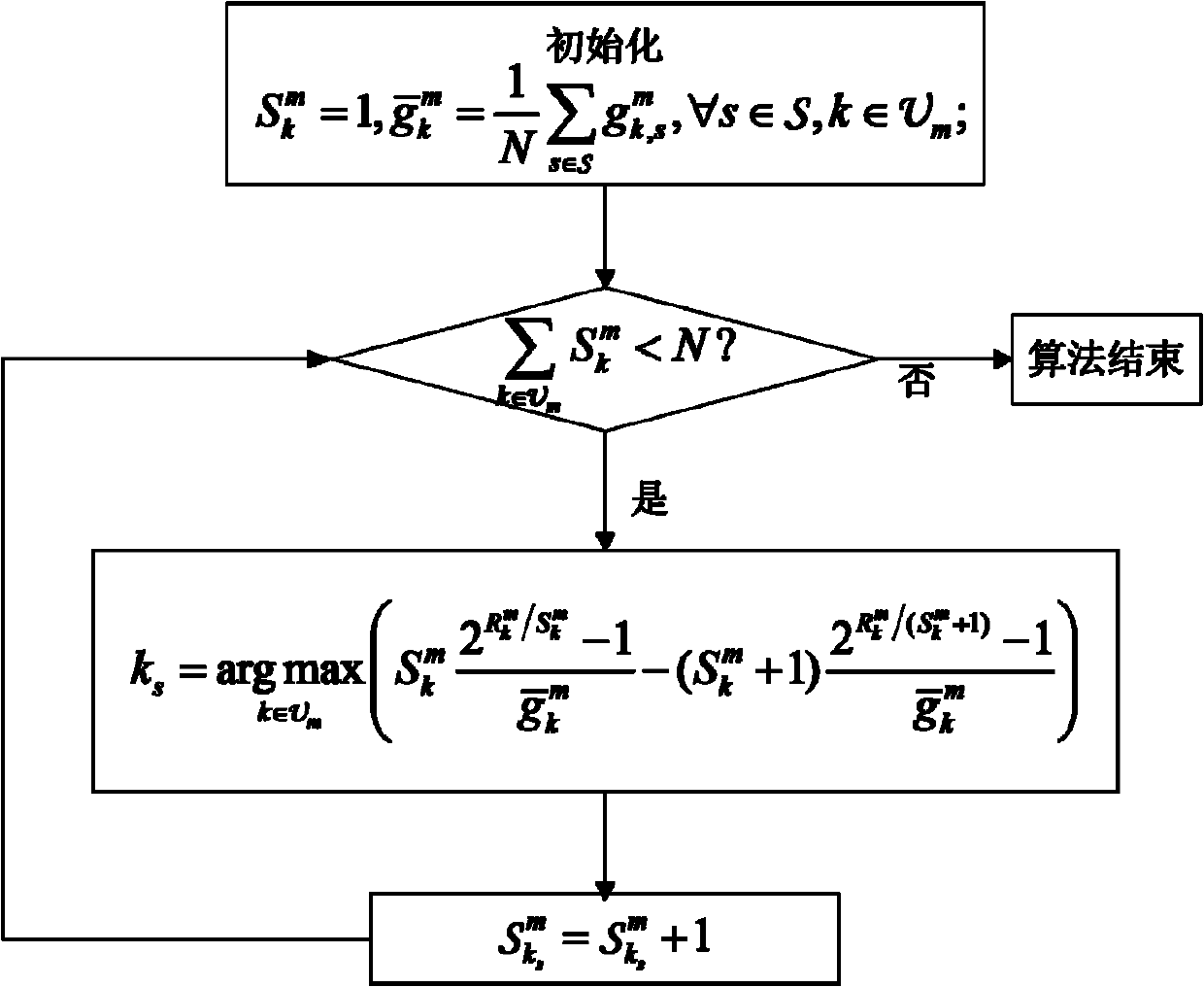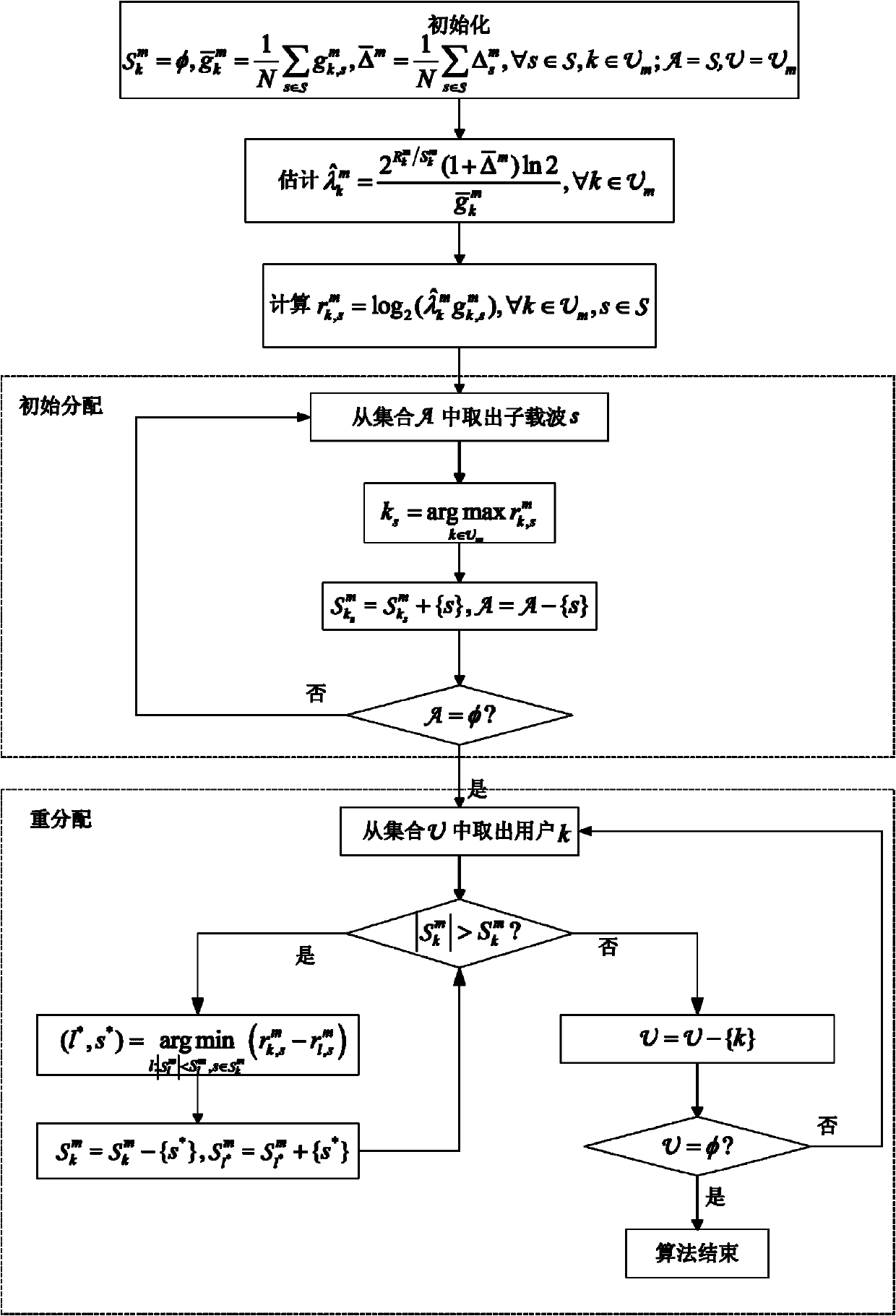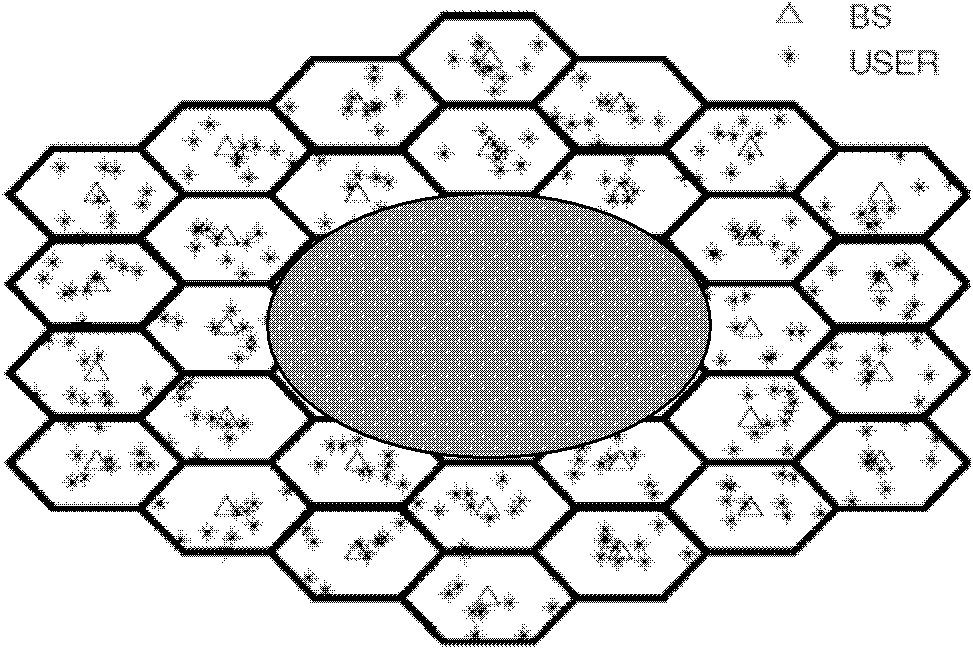Resource distribution and power distribution method for cellular multi-cell orthogonal frequency division multiple access (OFDMA) system
A resource allocation and allocation method technology, applied in the field of communication, can solve problems such as inter-cell user interference, joint optimization of power allocation and carrier allocation, complex problems, and inability to meet user transmission rate requirements
- Summary
- Abstract
- Description
- Claims
- Application Information
AI Technical Summary
Problems solved by technology
Method used
Image
Examples
Embodiment Construction
[0034] The present invention is described in further detail below in conjunction with accompanying drawing:
[0035] The present invention considers a downlink OFDMA system with N subcarriers. Suppose the system contains M cells, where M is a natural number greater than 1, the mth cell is one of the M cells in the system (so m is also a natural number), and there are K m active users, with B={1,2,...,M} and U m ={1,2,...,K m} represent all cell sets in the system and the user set in the mth cell (also referred to as “cell m”) respectively, and S={1, 2, . . . , N} represents the set of subcarriers. Assume that the system adopts the full frequency reuse strategy, and all cells share the spectrum resource with bandwidth B. Frequency reuse maximizes the available bandwidth in the cell, but causes co-frequency interference between adjacent cells. Let A m Indicates the set of neighboring cells that interfere with users in cell m. define matrix Represents the power allocation ...
PUM
 Login to View More
Login to View More Abstract
Description
Claims
Application Information
 Login to View More
Login to View More - R&D
- Intellectual Property
- Life Sciences
- Materials
- Tech Scout
- Unparalleled Data Quality
- Higher Quality Content
- 60% Fewer Hallucinations
Browse by: Latest US Patents, China's latest patents, Technical Efficacy Thesaurus, Application Domain, Technology Topic, Popular Technical Reports.
© 2025 PatSnap. All rights reserved.Legal|Privacy policy|Modern Slavery Act Transparency Statement|Sitemap|About US| Contact US: help@patsnap.com



